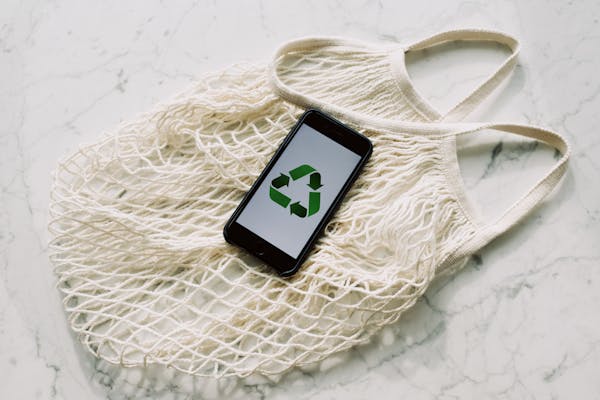
In today’s environmentally conscious world, businesses are increasingly recognizing the importance of adopting sustainable practices. Among these practices, eco-friendly packaging stands out as a significant step towards reducing environmental impact. The benefits of eco-friendly packaging extend beyond environmental preservation; they also encompass economic, social, and brand-related advantages. This article delves into the comprehensive benefits of eco-friendly packaging in business, illustrating why it is not only a responsible choice but also a strategic one.
Understanding Eco-Friendly Packaging
Sustainable packaging, sometimes referred to as eco-friendly packaging, is made with as little negative environmental impact as possible. Materials used in this kind of packaging are frequently recyclable, biodegradable, or derived from renewable resources. Reducing the carbon impact related to the creation, use, and disposal of packaging is the goal. Bioplastics made from plant sources, cardboard, recycled paper, and cornstarch are often used components in environmentally friendly packaging.
Environmental Benefits of Eco-Friendly Packaging
1. Reduction in Carbon Footprint
One of the primary benefits of eco-friendly packaging is the reduction in carbon footprint. Traditional packaging materials, especially plastics, are derived from fossil fuels, the extraction and processing of which contribute significantly to greenhouse gas emissions. In contrast, eco-friendly materials often require less energy to produce and emit fewer greenhouse gases, thus mitigating climate change.
2. Decreased Waste
By being recyclable, compostable, or biodegradable, eco-friendly packaging drastically lowers the quantity of garbage that ends up in landfills. Eco-friendly packaging lowers the amount of waste that remains in the environment by encouraging a natural process of material breakdown.
3. Conservation of Resources
Recycled materials are frequently used in sustainable packaging, which contributes to the preservation of natural resources. Utilizing recycled paper, for instance, lessens the demand for virgin wood pulp, contributing to the preservation of forests and the decrease in deforestation. Furthermore, materials like packaging made of mushrooms and cornstarch come from renewable resources, guaranteeing the long-term sustainability of the package supply.
Economic Benefits of Eco-Friendly Packaging
1. Cost Savings
Although the initial switch to eco-friendly packaging might involve some investment, businesses can achieve significant cost savings in the long run. Many eco-friendly packaging options are lightweight, which can reduce shipping costs. Additionally, the use of materials that can be easily recycled can lower waste disposal costs.
2. Competitive Advantage
Consumers are becoming more environmentally conscious and are more likely to support businesses that demonstrate a commitment to sustainability. By adopting eco-friendly packaging, businesses can differentiate themselves from competitors, attracting environmentally aware customers and gaining a competitive edge in the market.
3. Innovation and Efficiency
The shift towards eco-friendly packaging encourages innovation within companies. Businesses are motivated to develop new, efficient ways to produce and use packaging materials. This drive for innovation can lead to the discovery of more cost-effective packaging solutions and improvements in operational efficiency.
Social Benefits of Eco-Friendly Packaging
1. Enhanced Brand Image
Employing eco-friendly packaging is one of the many sustainable measures that can greatly improve a business’s reputation. These businesses are generally seen by consumers as ethical and responsible, which can boost word-of-mouth advertising and brand loyalty. In addition to drawing in clients, a strong brand image can draw in possible investors who want to fund environmentally friendly companies.
2. Compliance with Regulations
As governments around the world impose stricter environmental regulations, businesses that adopt eco-friendly packaging are better positioned to comply with these laws. Compliance can prevent potential legal issues and fines, ensuring smooth business operations and a positive reputation.
3. Employee Satisfaction
Companies that commit to sustainability often experience higher employee satisfaction. Employees tend to feel proud to work for a company that prioritizes environmental responsibility, which can improve morale and productivity. Furthermore, a positive work environment can attract top talent who are looking for employers with strong corporate social responsibility (CSR) values.
Operational Benefits of Eco-Friendly Packaging
1. Improved Supply Chain Efficiency
Eco-friendly packaging can lead to improvements in supply chain efficiency. Lightweight materials can reduce transportation costs and energy consumption. Additionally, sustainable packaging solutions often involve optimizing the design and size of packaging, which can reduce storage space requirements and streamline inventory management.
2. Enhanced Product Protection
Innovative eco-friendly packaging solutions are designed not only to be sustainable but also to offer superior protection for products. Materials such as molded pulp and biodegradable foam can provide cushioning and durability, reducing the risk of damage during shipping and handling. This can lead to fewer product returns and replacements, saving businesses time and money.
3. Versatility and Adaptability
Eco-friendly packaging materials are highly versatile and can be adapted to suit various types of products. Whether it’s food, electronics, or cosmetics, there are sustainable packaging options available that can meet the specific needs of different industries. This adaptability ensures that businesses can maintain high standards of packaging without compromising on sustainability.
Customer Benefits of Eco-Friendly Packaging
1. Health and Safety
Traditional packaging materials, especially plastics, can contain harmful chemicals that pose risks to human health. Eco-friendly packaging, on the other hand, is often free from toxic substances, making it safer for consumers. This is particularly important for packaging that comes into direct contact with food or personal care products.
2. Positive Customer Experience
Eco-friendly packaging can enhance the overall customer experience. Many consumers appreciate the effort businesses put into sustainable practices and feel good about supporting eco-conscious brands. Packaging that is easy to recycle or compost adds convenience for customers and aligns with their values, fostering a positive connection with the brand.
3. Transparency and Trust
Businesses that adopt eco-friendly packaging can leverage this commitment to build transparency and trust with their customers. Clearly communicating the environmental benefits and sustainability efforts through packaging labels and marketing materials can reinforce trust and loyalty among consumers. Customers are more likely to support brands that are open about their sustainability initiatives.
Case Studies and Examples
1. Patagonia
Patagonia, an outdoor clothing and gear company, is renowned for its commitment to sustainability. The company uses recycled materials for its packaging and has implemented initiatives to reduce packaging waste. Patagonia’s dedication to eco-friendly packaging has strengthened its brand image and resonated with its environmentally conscious customer base.
2. Lush Cosmetics
Lush Cosmetics is another example of a company that has successfully embraced eco-friendly packaging. The company uses recycled and biodegradable materials for its packaging and encourages customers to return empty containers for recycling. Lush’s “naked” packaging approach, which involves minimal or no packaging, has further solidified its reputation as a leader in sustainability.
3. IKEA
IKEA, the global furniture retailer, has made significant strides in sustainable packaging. The company has replaced much of its plastic packaging with recyclable paper and cardboard. IKEA’s efforts to reduce packaging waste and use renewable materials have not only reduced its environmental impact but also enhanced its brand reputation.
Overcoming Challenges
1. Initial Investment
One of the primary challenges businesses face when transitioning to eco-friendly packaging is the initial investment required. However, it is essential to view this investment as a long-term benefit. The cost savings, enhanced brand image, and customer loyalty that result from sustainable practices can outweigh the initial expenses.
2. Material Availability
Another challenge is the availability of sustainable packaging materials. Businesses need to work closely with suppliers to source eco-friendly materials and ensure a steady supply. Collaborating with innovative packaging companies can help businesses stay ahead of the curve and find suitable solutions for their needs.
3. Consumer Education
Educating consumers about the benefits of eco-friendly packaging is crucial for its success. Businesses should invest in marketing and communication strategies that highlight the environmental advantages and encourage responsible disposal practices. Clear labeling and instructions on packaging can also help consumers make informed choices.
Future Trends in Eco-Friendly Packaging
1. Technological Advancements
Advancements in technology are driving the development of new and improved eco-friendly packaging materials. Innovations such as edible packaging, biodegradable films, and plant-based plastics are becoming more viable and accessible. Businesses that stay informed about these technological advancements can continue to enhance their sustainability efforts.
2. Circular Economy
The concept of a circular economy, where resources are reused and recycled to create a closed-loop system, is gaining traction. Eco-friendly packaging plays a crucial role in this model by reducing waste and promoting the reuse of materials. Businesses that embrace circular economy principles can contribute to a more sustainable and resilient future.
3. Consumer Demand
As consumer awareness of environmental issues continues to grow, the demand for eco-friendly packaging is expected to increase. Businesses that proactively adopt sustainable packaging practices will be better positioned to meet this demand and capitalize on the growing market of eco-conscious consumers.
Conclusion
The benefits of eco-friendly packaging in business are multifaceted, encompassing environmental, economic, social, operational, and customer-related advantages. By reducing carbon footprints, decreasing waste, conserving resources, and enhancing brand image, eco-friendly packaging contributes to a more sustainable and profitable business model. Companies that invest in sustainable packaging solutions can gain a competitive edge, improve customer satisfaction, and contribute to a healthier planet.
In a world where environmental concerns are becoming increasingly pressing, the transition to eco-friendly packaging is not just a trend but a necessity. Businesses that recognize and act on the benefits of eco-friendly packaging will not only contribute to environmental preservation but also ensure their long-term success and resilience in a rapidly changing marketplace. The benefits of eco-friendly packaging are clear, and the time for businesses to make this pivotal shift is now.



